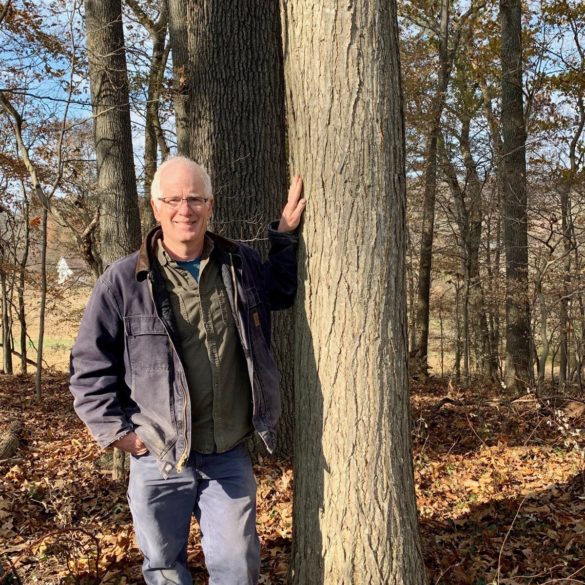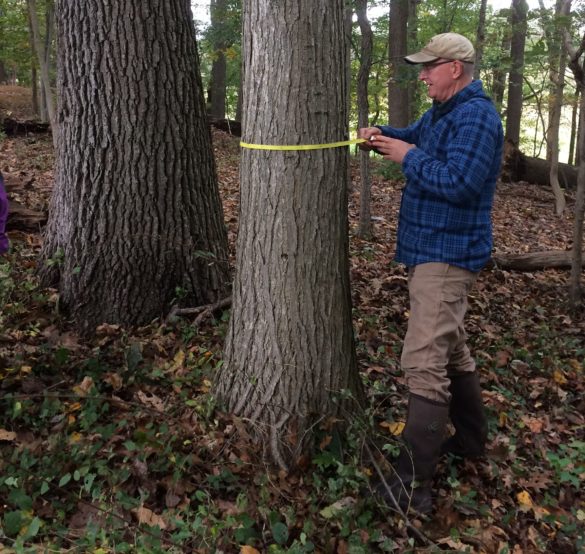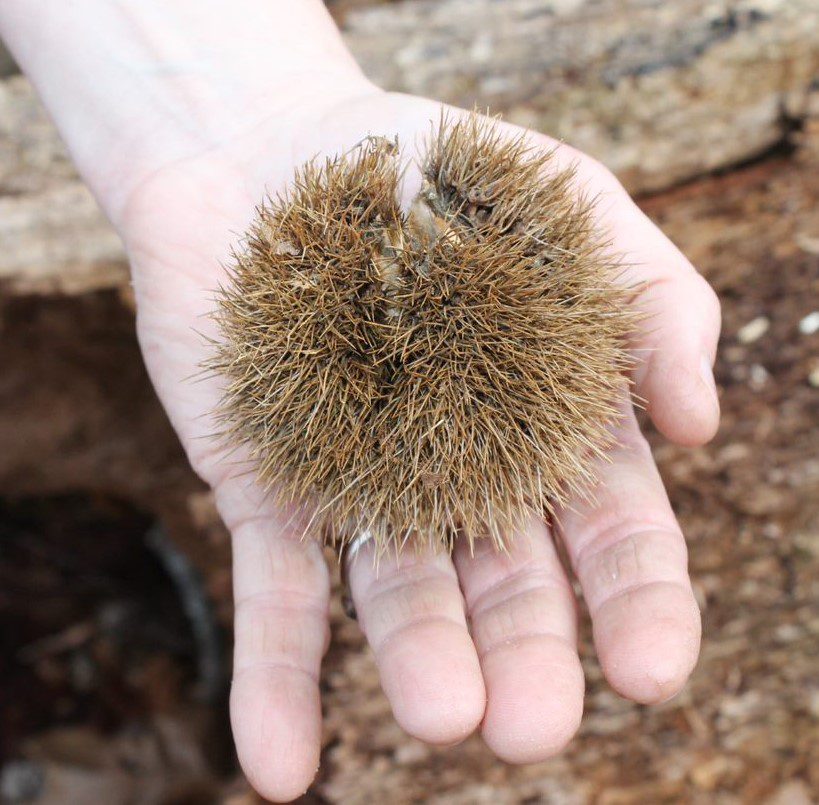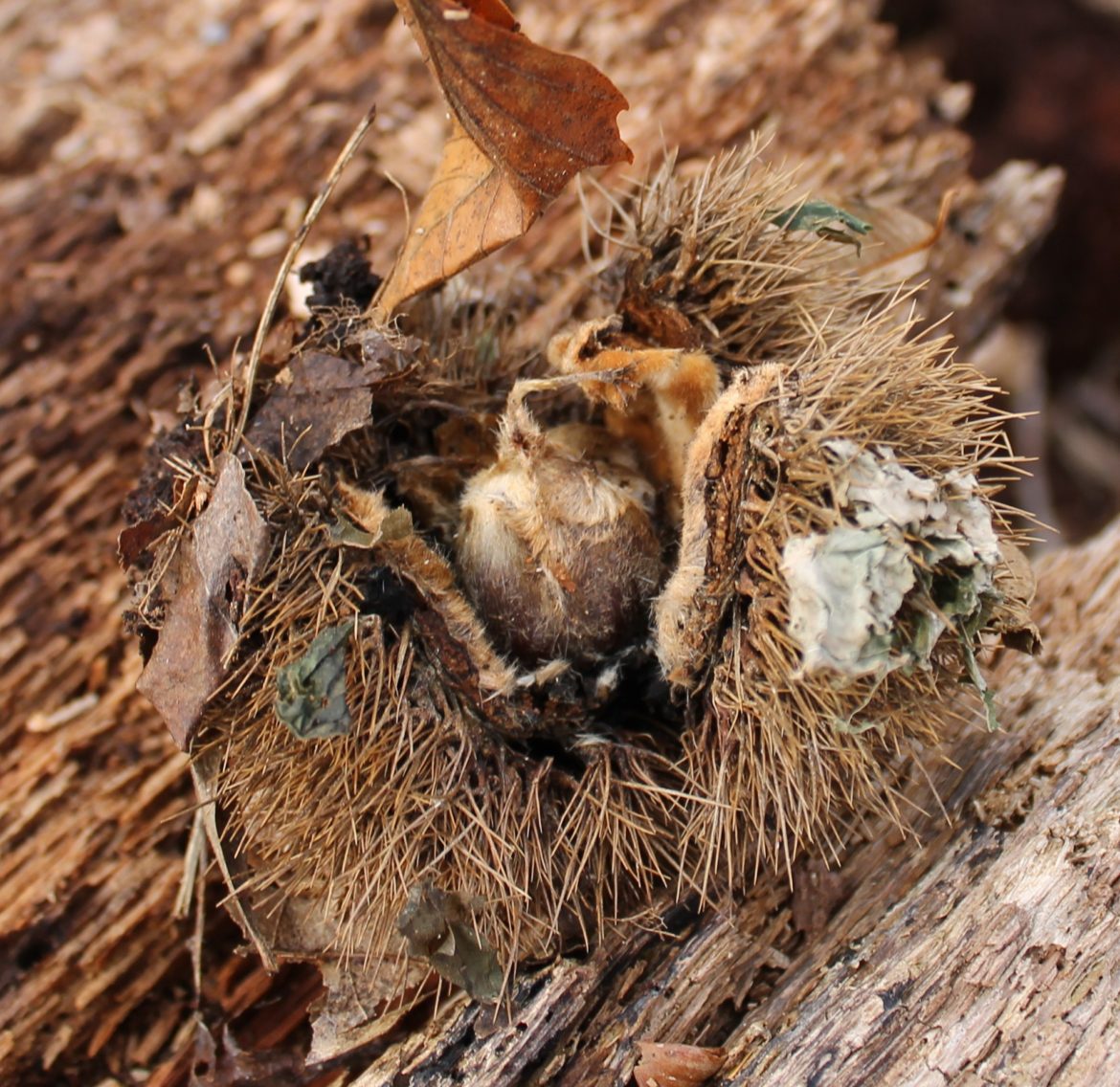The Biggest American Chestnut He’d Ever Seen
In November 2019 an exciting discovery connected the Delaware Nature Society (DelNature) with a past that few of us had known. Bret Lanan was hunting deer in a remote corner of our Coverdale Farm Preserve in Greenville when his keen eyes spotted what he suspected was a mature American chestnut tree. He alerted DelNature Land Steward Dave Pro, who quickly assembled our staff and Bill McAvoy, the state botanist. Bill confirmed that it was indeed a healthy American chestnut (Castanea dentata)! He excitedly declared it to be the biggest one he’d ever seen. Based on its diameter, he estimated it to be at least 50 years old.


The American Chestnut Was Once a Common Tree
To understand why we were so thrilled by a single tree, you have to appreciate its troubled history. The American chestnut was once a very common tree throughout the northeastern United States. In some forests one in four trees was a chestnut, making them an important part of the woodland ecosystem. Many birds and mammals probably nested or sheltered in chestnuts because they were so big and bulky. Each fall they dropped hundreds of chunky nuts that provided food for a variety of animals like bears, squirrels and turkeys.

Tragically however, the fate of the American chestnut was sealed in the early 1900s. A New York nursery unknowingly imported some Japanese chestnut trees infected with a fungus known as chestnut blight. Japanese chestnuts, exposed to this fungus for a long time, had evolved a resistance to it. However, the blight was a new threat to the American chestnut and it proved devastating. The spores spread rapidly through the wind and killed a staggering 4 billion trees in just 40 years. The blight almost eliminated the trees by World War Two, apart from a few trees planted in other parts of the country.
A Fungus Blight Nearly Wiped Them All Out
Although virtually all of the chestnuts are long gone, the blight remains a potent threat. The stumps of old chestnuts still continue to produce new shoots. Sadly, these usually succumb to the fungus within a few years. Something about the Coverdale tree’s genetic make-up may have helped it to fight off the disease. We thought perhaps it was a hybrid between an American chestnut and a disease-resistant Japanese or Chinese chestnut. The only way to be sure was to analyze its DNA. Eric Kelley, an arborist from Mt. Cuba Center, carefully climbed the tree and collected pollen samples for the American Chestnut Foundation. We sent samples to the laboratory for analysis and anxiously awaited the results. In February 2022 we got some exciting news. The DNA analysis confirmed the Coverdale tree to be a 100% pure American chestnut!

Our Tree Could Be A Special Resource
This makes it a precious resource for conservation biologists who are trying to identify genes associated with blight resistance. Also, since it is confirmed to have 100% American chestnut DNA, it could be back-crossed with resistant strains of other chestnuts. Maybe one day this beautiful native tree may once again be a familiar part of Delaware’s landscape. We celebrated the good news with a staff hike to what we now know to be a genuine American chestnut!

The chestnut is on private land but we will be conducting programs which visit this rare tree. DelNature is grateful to the families who generously donated the land on which this survivor tree stands.
Learn more about American chestnuts at The American Chestnut Foundation and also through this excellent book American Chestnut – Life, Death, and Rebirth of a Perfect Tree.